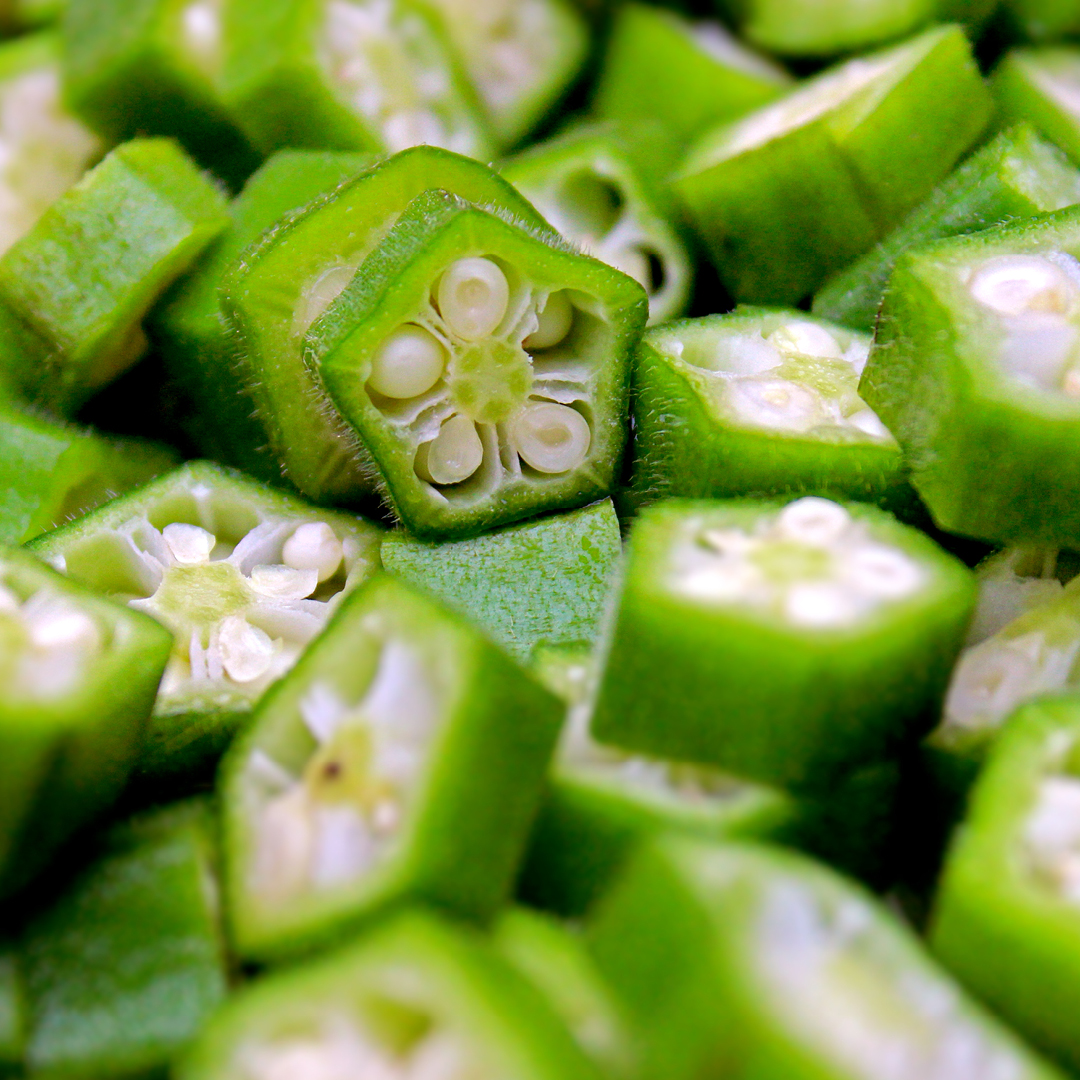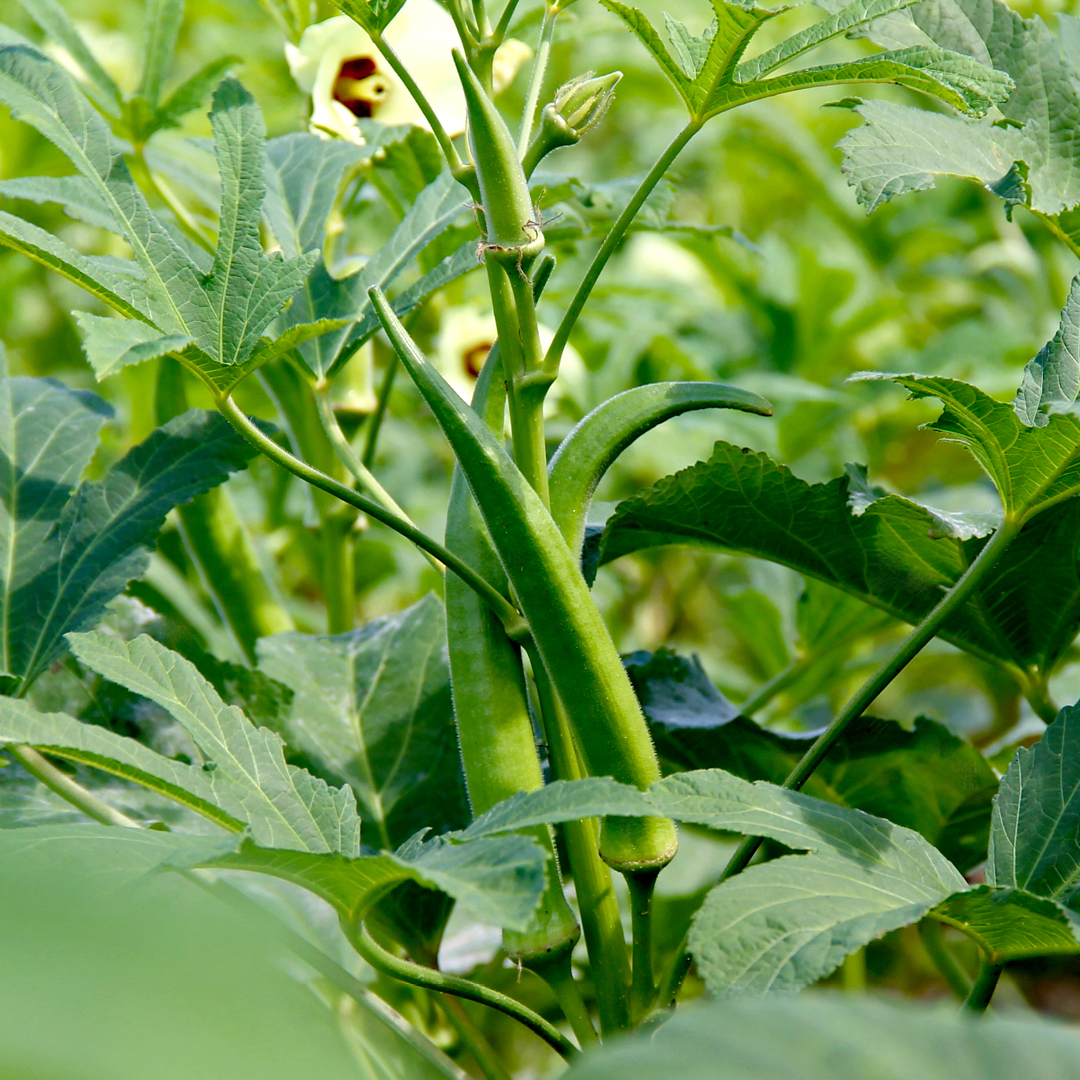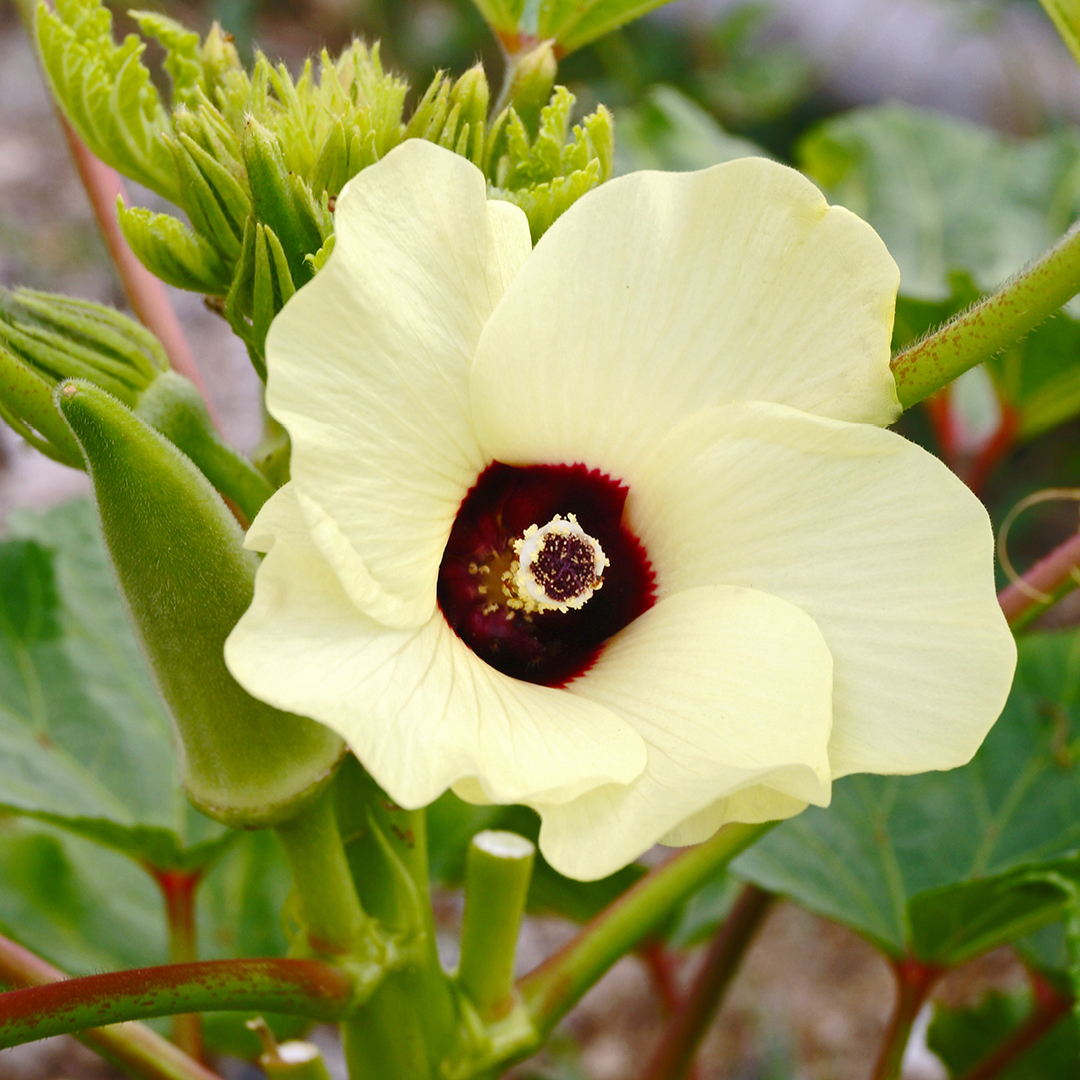In the old-fashioned Southern way of growing okra, it all begins with the soil. Generations of Southern gardeners have understood the importance of preparing the earth with care and reverence. Start by selecting a sunny spot in your garden, preferably with well-drained soil. Then, enrich the soil with plenty of organic matter, such as compost or aged manure. This not only nourishes the soil but also promotes healthy growth and robust yields.
Choosing the Right Varieties
In Southern gardens, okra comes in a variety of shapes, sizes, and colors, each with its own unique charm. Some popular heirloom varieties include ‘Clemson Spineless,’ ‘Louisiana Green Velvet,’ and ‘Red Burgundy.’ These varieties have stood the test of time and are prized for their flavor and resilience. When selecting your okra seeds or seedlings, opt for heirloom or open-pollinated varieties to honor the tradition of preserving old-fashioned Southern crops.
Planting with Precision
Traditionally, okra is planted directly into the ground once all danger of frost has passed and the soil is good and warmed. In the South, this typically occurs in late spring, around April or May. When growing okra in the North, early June is an excellent time to plant. Okra is ready to harvest about 60 to 70 days after planting. Plant okra seeds or seedlings about 1 inch deep and 12-18 inches apart, allowing ample space for the plants to spread out as they grow. Remember to water the newly planted seeds gently but consistently to keep the soil evenly moist.
Nurturing with Care
As your okra plants begin to grow, they’ll require regular attention and care. Keep the soil consistently moist, especially during dry spells, but avoid overwatering, as okra is susceptible to root rot in waterlogged soil. Mulch around the base of the plants with straw or compost to help retain moisture, suppress weeds, and regulate soil temperature.
Harvesting the Fruits of Your Labor
Patience is key when it comes to harvesting okra. The pods are best picked young and tender, ideally when they’re 2-3 inches long. Check your okra plants every 2-3 days, as the pods can quickly become tough and woody if left to mature on the plant. Use a sharp knife or scissors to harvest the pods, cutting them from the stem without damaging the plant.
Preserving Tradition for Future Generations
Growing okra the old-fashioned Southern way is more than just a gardening technique – it’s a celebration of heritage, culture, and connection to the land. By embracing these time-honored methods, we not only preserve the traditions of our ancestors but also pass on a legacy of stewardship and respect for the earth to future generations.
So, as you tend to your okra plants under the Southern or Northern sun, take a moment to reflect on the rich tapestry of history woven into each tender pod. And, as you savor the flavors of your harvest, know that you’re not just nourishing your body but also nurturing a tradition as enduring as the soil itself.
Gumbo, a quintessential Southern dish, is a flavorful, hearty stew that brings together the diverse culinary influences of the region. The inclusion of okra not only adds a unique texture but also serves as a natural thickener, giving the gumbo its characteristic richness. Here’s a traditional recipe for Southern gumbo that showcases the magic of okra.
Ingredients
8 to 10 servings
For the Roux:
– 1/2 cup vegetable oil
– 1/2 cup all-purpose flour
For the Gumbo:
– 1 pound smoked sausage, sliced into rounds (such as andouille or kielbasa)
– 1 pound chicken thighs, cut into bite-sized pieces
– 1 pound shrimp, peeled and deveined
– 1 large onion, finely chopped
– 1 bell pepper, finely chopped
– 2 celery stalks, finely chopped
– 4 cloves garlic, minced
– 2 cups fresh okra, sliced
– 1 can (14.5 oz) diced tomatoes
– 6 cups chicken broth
– 2 bay leaves
– 1 teaspoon dried thyme
– 1 teaspoon dried oregano
– 1 teaspoon paprika
– 1/2 teaspoon cayenne pepper (adjust to taste)
– Salt and black pepper to taste
– 2 green onions, sliced (for garnish)
– Fresh parsley, chopped (for garnish)
– Cooked white rice (for serving)
Instructions
- Make the Roux:
- In a large, heavy-bottomed pot or Dutch oven, heat the vegetable oil over medium heat.
- Gradually whisk in the flour to form a smooth paste.
- Cook the roux, stirring constantly, until it reaches a deep brown color, similar to chocolate, about 20-30 minutes. Be careful not to let it burn. If it does burn, you will need to start over.
- Once the roux is ready, set it aside.
- Cook the Sausage and Chicken:
- In a separate pan, add the sliced sausage and chicken pieces.
- Cook, stirring occasionally, until the sausage is browned and the chicken is cooked through.
- Cut the Vegetables:
- While the meat is cooking, chop all the vegetables and slice the okra into rounds.
- Start the Gumbo:
- In a large pot, over medium heat, add the chicken broth, chopped vegetables, garlic, parsley, and the roux.
- Add the sausage and chicken.
- Incorporate the Okra and Tomatoes:
- Add the sliced okra and cook for another 5 minutes, stirring frequently.
- Stir in the diced tomatoes, making sure to scrape up any browned bits from the bottom of the pot.
- Simmer the Gumbo:
- Add the bay leaves, thyme, oregano, paprika, cayenne pepper, salt, and black pepper.
- Bring the mixture to a boil, then reduce the heat and let it simmer uncovered for about 45 minutes, stirring occasionally.
- Cook the Shrimp:
- Add the shrimp to the pot and cook for another 5-7 minutes, until the shrimp are pink and opaque.
- Serve:
- Remove the bay leaves and adjust the seasoning with more salt and pepper if needed.
- Serve the gumbo over a bed of cooked white rice.
- Garnish with sliced green onions and chopped parsley.
Enjoy your classic Southern gumbo, where the tender okra melds beautifully with the smoky sausage, succulent chicken, and fresh shrimp, creating a dish that’s a true celebration of Southern culinary tradition.



